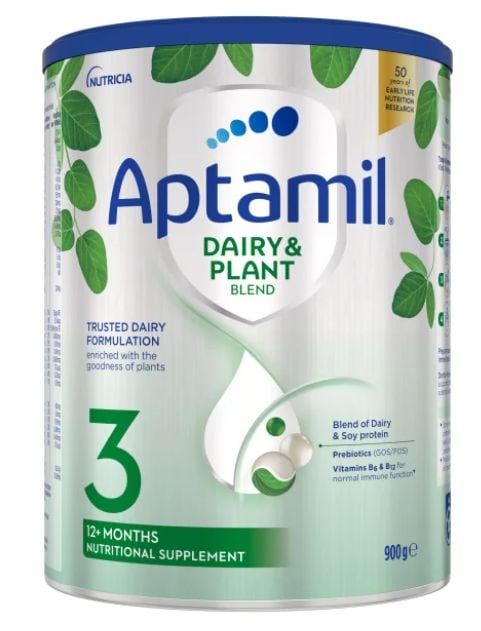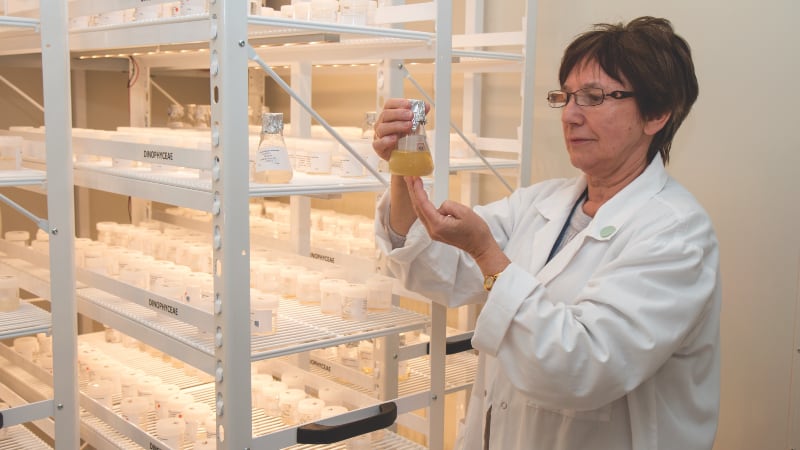The product, sold under the Aptamil brand, is available as a stage 1 formula for infants zero to six months old, a stage 2 follow-on formula, and as a nutritional supplement for toddlers 12 months old and above.
As a dairy and plant blend, the formula contains 60 per cent dairy protein from whey and casein and 40 per cent non-GMO soy protein.

It is also fortified with eight micronutrients for supporting the immune system function, namely zinc, iron, folate, vitamins A, B6, B12, C, and D.
In addition, it contains prebiotics GOS and FOS formulated based on the company’s proprietary ratio, omega-3 DHA, calcium, and iodine.
The products are sold via Amazon, NutriciaStore, and Woolworths in Australia, as well as NutriciaStore in New Zealand.
Responding to queries from NutraIngredients-Asia, Shantanu Das, head of innovation and PSQC at Danone Australia-New Zealand, said the product was developed in view of the growing demand for plant-based products for kids, while creating a well-rounded nutritional product at the same time.
“There has been a big increase in parental desire to include more plant-based products in their children’s diet and we’re not seeing any signs of this trend slowing down.
“Although 100 per cent plant-based formulas are feasible to make, the risk is they may result in nutritional compromises.”
As such, the company has developed the dairy and plant milk powder blend which it believes “combines the best of both worlds.”
“It combines the nutrition of a dairy-based formula with an increased amount of plant-based ingredients, prebiotics and 8 immunity nutrients to meet parents' desire for a more plant-based diet, without compromising nutrition or quality.”
Danone first launched the dairy and plants blend formulas under the Nutrilon brand last year in Netherlands.
Three key R&D challenges
Das highlighted three challenges when formulating the dairy and plant milk blend, namely formulation complexity, taste and palatability, and manufacturing and scalability.
In terms of formulation complexity, he pointed the need to meet the nutritional requirements of food regulator FSANZ, as well as the company’s internal nutritional guidelines.
“Developing a recipe that maintained the necessary nutritional composition, taste, and texture posed a significant challenge. To overcome this, team conducted a range of benchtop trials, product analyses and taste-tasting,” he said.
Secondly, he pointed out the need to balance the flavours of dairy and soy, which required extensive sensory evaluations and feedback from both experts, parents, and toddlers.
“Toddlers can be highly sensitive to taste and texture, making it challenging to develop a formulation that is both nutritious and appealing to their developing palates.
“Through continuous taste-testing sessions, we were able to refine the formulation to ensure great taste and palatability, resulting in a product for early life' mild taste of plants to train young children’s palates for plants later in life.”
Lastly, powder flowability was another key area to consider during the product development process.
This is because a base powder with soy protein has lower flowability as compared to a dairy base powder, and this could create inefficiencies and clogging in the dry blending plant, Das explained.
“During development phase of the project, a number of ratios between soy and dairy were evaluated and we identified that a blend with 40 per cent soy and 60 per cent dairy provided us the workable flowability as well as taste of the product while meeting all nutritional requirement,” he said.





